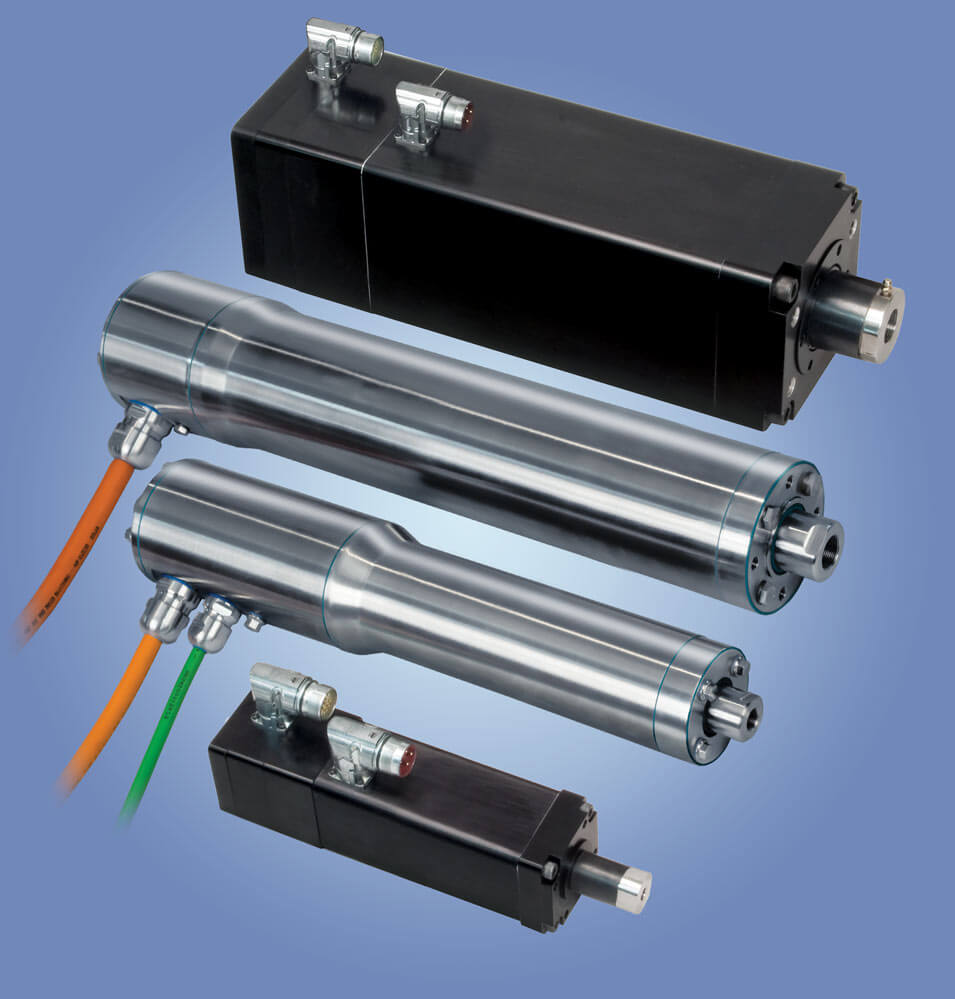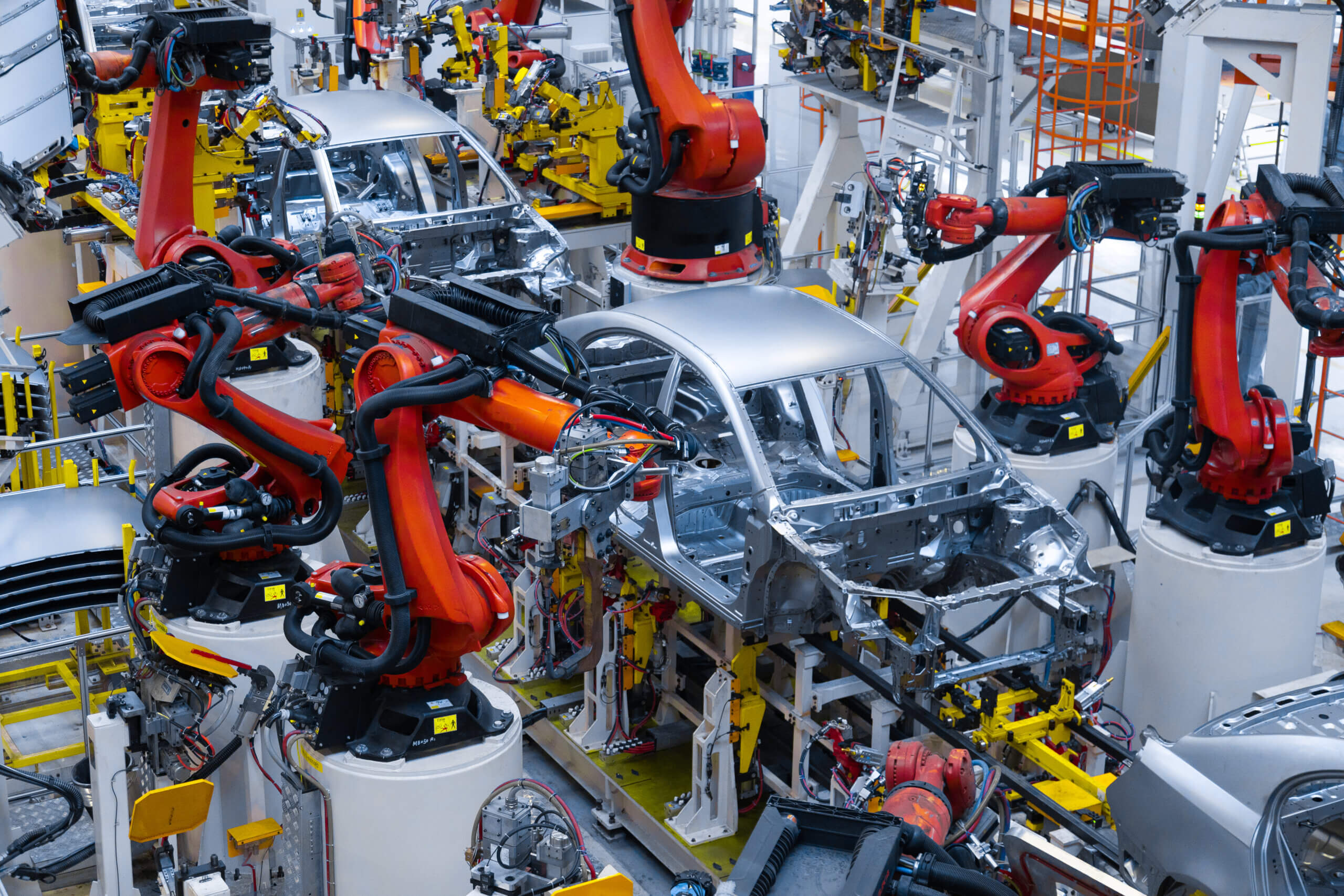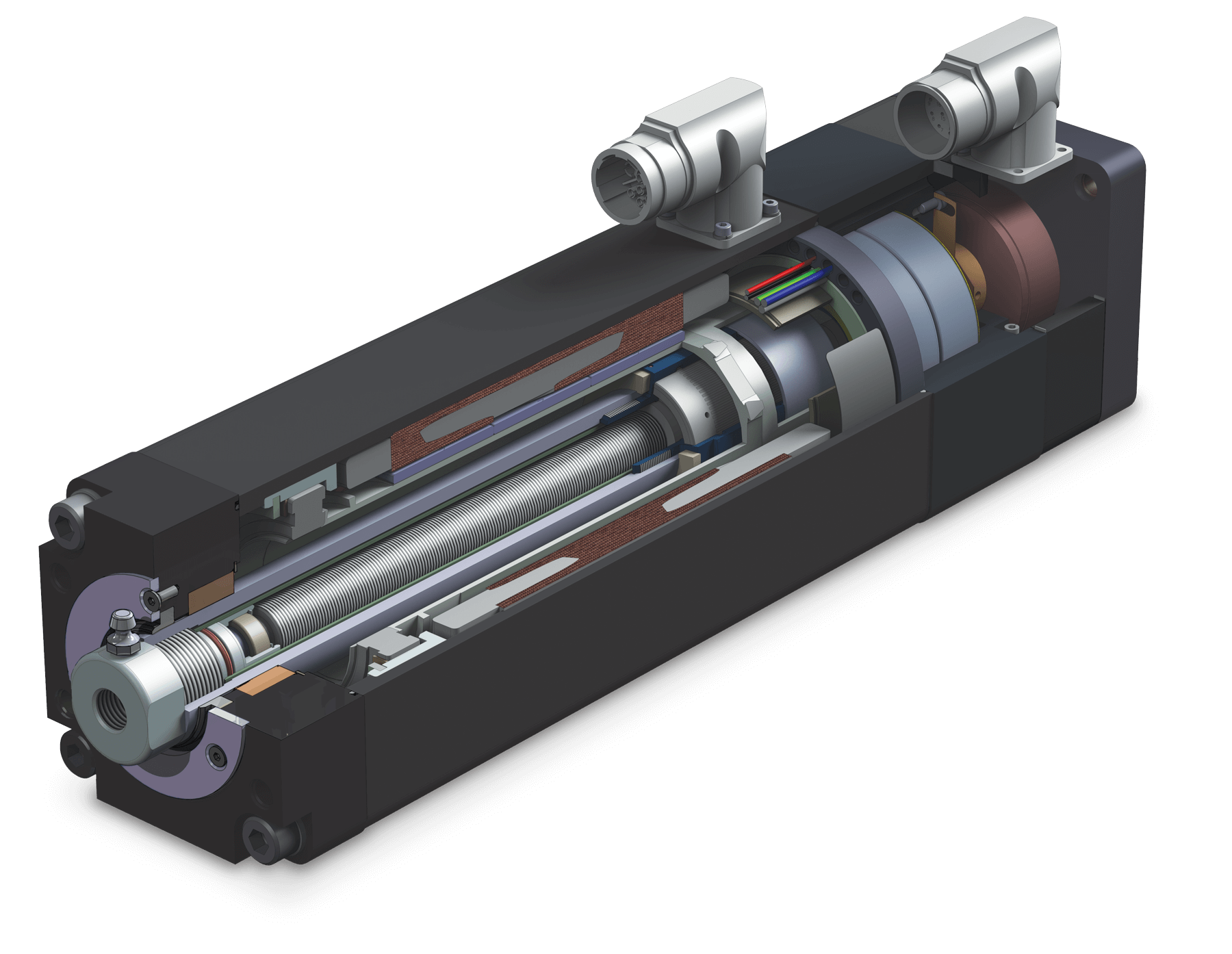Integrated Linear Actuators Simplify Machine Design and Enhance Performance
By John Fenske on June 17, 2024

Design engineers face a growing demand for machines that increase throughput, reduce system complexity and offer a long life with minimal maintenance. To meet these demands, engineers should carefully consider each machine component — especially the linear actuators that power many types of industrial machines.
When specifying linear actuators, engineers often face the choice of either traditional or integrated electric linear actuator designs. Traditional actuators consist of a screw assembly driven by an externally mounted servo motor, while integrated actuators contain a servo motor within the same module.
Although traditional actuators offer advantages like motor option flexibility or high stroke lengths, many applications would benefit from an integrated actuator’s compact form, lighter weight, higher rigidity and greater protection.
Here’s a rundown of what integrated linear actuators have to offer.

Integrated Actuator Benefits
An integrated actuator’s screw assembly is rigidly connected to an internal hollow-core servo motor. Both the screw and nut assemblies travel within the rotor, and a set of angular contact ball bearings support the screw and rotor assemblies. Applying external anti-rotation methods to the thrust rod and nut assembly ensures linear motion.
Easy Integration and Lower Cost
One defining advantage of the integrated actuator design is that it removes the hassle of specifying and mounting a motor. Traditional actuators require a third-party motor, and these components usually share the same manufacturer as the servo drive. While this practice simplifies traditional actuator integration, integrated actuators completely eliminate motor integration time and cost. Accounting for additional components like feedback devices and cables further amplifies this simplicity.
Another advantage of integrated actuators is their cost compared to traditional actuators. While a single traditional actuator might be less costly, additional expenses in the purchase and installation of a servo motor make the overall price similar to or more than the cost of an integrated actuator.
Optimal Size and Weight
Integrated actuators are a good choice to meet size requirements because they are generally more compact compared to similar-performance traditional actuators, offering you greater flexibility in machine designs.
Weight considerations are essential for applications where the actuator contributes to moving mass like in industrial robots. Because it includes the servo motor in the same package, an integrated actuator might weigh more than a standalone traditional actuator. However, depending on the motor, complete traditional actuator systems can be heavier and have an awkward center of gravity.
Thanks to a compact design, an integrated actuator’s center of mass is located along the center axis and closer to the mounting face. This feature allows integrated actuators to support more efficient movement.
Excellent Protection
Traditional actuators tend to require more components, meaning more joints will require sealing. On the other hand, integrated actuators have less components and joints, offering greater ingress protection and making these components better suited for harsh environments with dust, debris and moisture.
The integrated actuator can also withstand shocks and vibrations. The further an actuator’s center of gravity is from its mounting surface, the greater the stress on the mounting fasteners. With a center of mass closer to the mounting surface than its traditional counterpart, an integrated actuator is less sensitive to shocks and vibrations.
High Efficiency
With fewer components that transmit torque and rotate versus traditional actuators, integrated actuators have fewer sources of wear, misalignment and sideloading. This design reduces friction and ensures greater efficiency and reliability.
Greater Acceleration and Minimal Backlash
To minimize the backlash that detracts from an actuator’s positioning accuracy and bi-directional repeatability, integrated actuators feature a rigid connection between the rotor and screw shaft. This design provides greater accuracy and repeatability than traditional designs, which use belts, pulleys, couplers or gearboxes to connect to the rotor — all of which introduce backlash.
Thanks to this design, the actuator has a much stiffer torque transmission system, increasing the system’s overall resonant frequency and delivering higher acceleration and responsiveness.
Increased Safety
Both traditional and integrated actuators have holding brakes to arrest the rotor in case of power loss. This component is crucial in vertical applications where power loss can impact product or operator safety. Unlike traditional actuators, the integrated design features a rigid connection between the brake and screw assembly. Without the belt or coupling system between the brake and screw assembly found in traditional designs, the integrated actuator eliminates potential failure points and ensures brake engagement.
IMA Series Integrated Linear Actuator
The Tolomatic IMA Series of integrated linear servo actuators offer high positional accuracy and excellent force repeatability. For long-lasting operation, the IMA is available with either ball or roller screw assemblies. A compact, lightweight construction enhances the IMA’s flexibility in machine designs. The actuator also meets heavy-duty application requirements by providing up to 8,000 pound-force (lbf) of force and featuring IP65 and IP67 protection rating options. Offering excellent compatibility, the IMA supports many third-party, industry-leading drive manufacturers.

IMA actuators are also available in stainless steel and food-grade models. The IMA-S consists of a stainless steel construction with an IP69K rating and can withstand harsh washdown conditions. The IMA food-grade model also offers washdown protection and features a food-grade white epoxy coating and food-grade lubrication. Stainless steel fasteners, rods and rod ends are also available.
These integrated actuators are ideal for a variety of applications like industrial automation, pressing tasks, end-of-arm tooling, food and beverage equipment, pneumatic or hydraulic replacement — and more. Another series of integrated linear actuators, the ServoWeld® CSWX, is ideal for spot welding applications in automotive plants.
To learn more about traditional and integrated actuators, read our white paper. If you have questions, you can also talk to our engineers.

 Ask an Engineer
Ask an Engineer